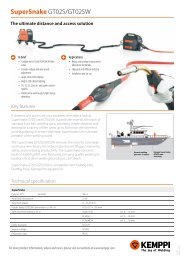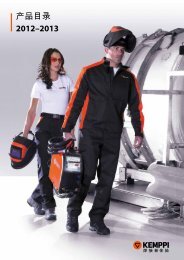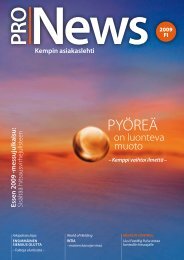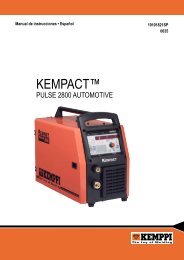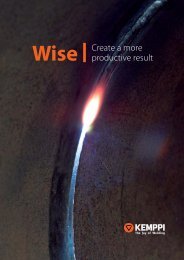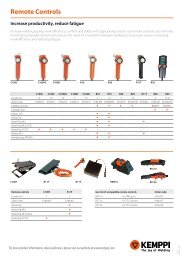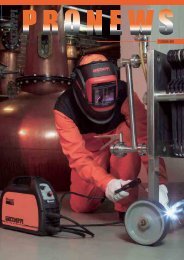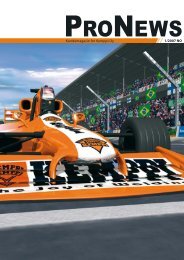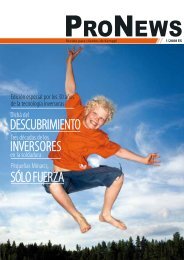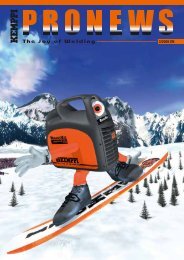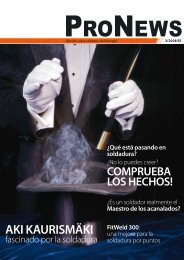Create successful ePaper yourself
Turn your PDF publications into a flip-book with our unique Google optimized e-Paper software.
Steps<br />
Collect the necessary pieces: empty<br />
wire reel, flat bars for legs, metal<br />
pieces for feet and steel axle rods for<br />
side braces.<br />
A large (15 kg) reel with a 300 mm<br />
diameter should be used as the<br />
bottle slots. The reel must also be<br />
a model with short radial braces,<br />
whose installation requires a<br />
separate fitting.<br />
Bend the steel rods to be used for<br />
side braces using a 90 mm bending<br />
tube into links whose diameter<br />
matches that of the wire reel casing.<br />
If necessary heat the rods with a<br />
blowtorch to make bending easier.<br />
Weld the feet to the curved legs. The<br />
metal discs used in the model are<br />
tacked in place before fully welding.<br />
Weld the side braces to the curved<br />
legs. The attachment points must be<br />
symmetrically marked on the curved<br />
legs on both sides of the casing<br />
attachment point.<br />
32<br />
<strong>Kemppi</strong> ProNews 2 • 2006<br />
Bend the flat bars into gentle curve<br />
by heating them. If necessary, heat<br />
carefully using a blowtorch.<br />
Gather the pieces to be welded to<br />
the wine rack. All pieces used are<br />
waste metal taken from a workshop.<br />
Before welding the casing, mark the<br />
attachment points on the curved legs<br />
and casing. The casing attachment<br />
point should be marked between the<br />
radial braces.<br />
Then weld the side braces to the<br />
casing, thus securing the rack<br />
structure.<br />
Finish the wine rack with spraypaint.<br />
The braces on each side also function as carrying handles.<br />
In this case they are made out of 8 mm steel axle<br />
rods, each with a length of 740 mm. The rods are bent<br />
into curves at the halfway point using a 90 mm torque<br />
tube. If necessary, use a blowtorch to make bending<br />
easier.<br />
The curved legs for the rack are made of fl at bar. For<br />
our model the leg thickness is 3 mm, width 20 mm and<br />
length 460 mm, but other types of fl at bar you might fi nd<br />
on a workshop fl oor are also perfectly acceptable. Measurements<br />
do not need to be overly precise. Bend the legs<br />
into a gentle curve using a torque tube and, if necessary,<br />
using a blowtorch.<br />
For our model, the feet to be placed under the legs are<br />
made with the round discs punched out of sheet metal,<br />
but any small metal pieces can be used. For example, lots<br />
of small waste metal pieces are formed when machining<br />
sheet metal. These are excellent for this purpose.<br />
When the side braces are welded to both the curved<br />
legs and the casing, they work together to form a solid<br />
structure, which makes the wine rack strong and keeps<br />
it from falling over, even when fully loaded with eight<br />
wine bottles.<br />
Finishing the rack with spraypaint will give it a real design<br />
look, perfect for even the most elegant dinner party.<br />
What’s more, this wine rack is not just any old household<br />
item – it has quite a history behind it: it comes from<br />
the inside of a Kempact welding machine. n



